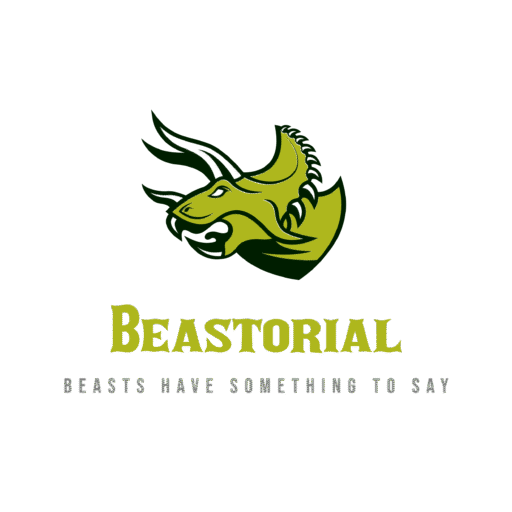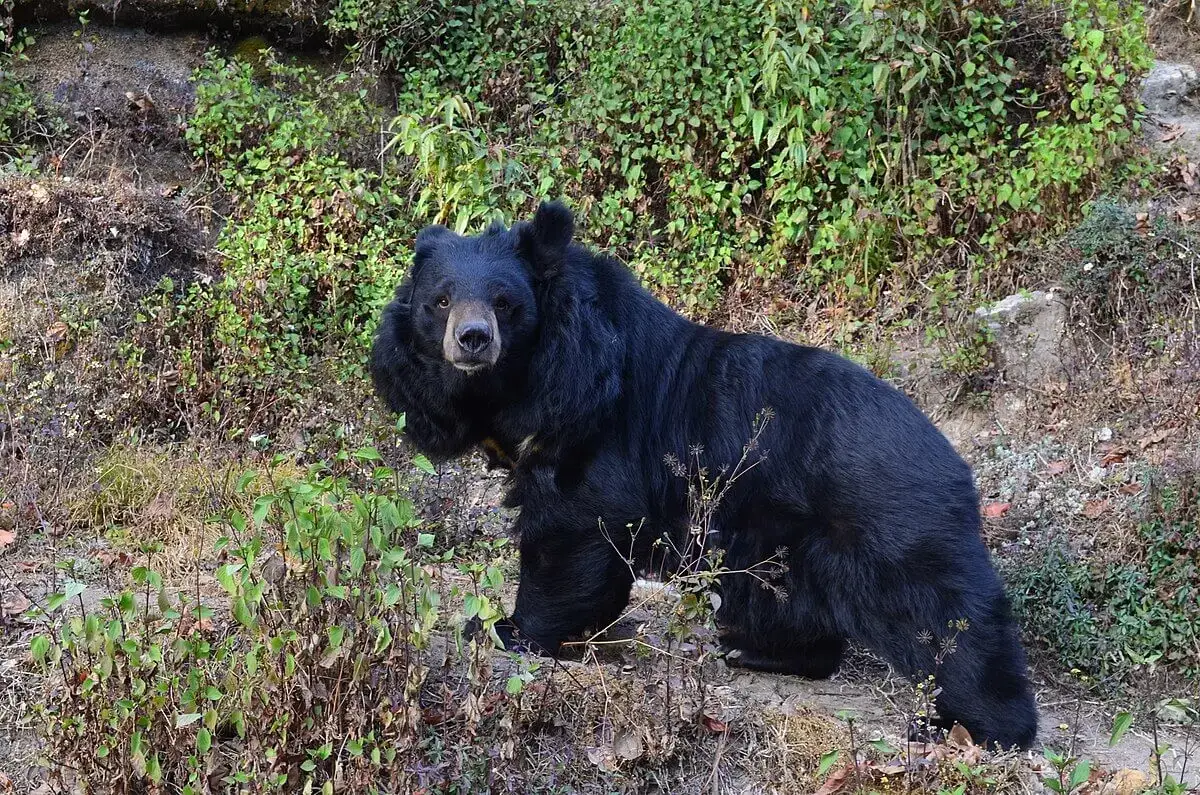Contents
- 1 What Do Bears Eat: A Comprehensive Guide to Bear Diet and Feeding Habits
What Do Bears Eat: A Comprehensive Guide to Bear Diet and Feeding Habits
Understanding what do bears eat is crucial for anyone interested in wildlife biology, outdoor safety, or conservation efforts. Bears are among the most fascinating and powerful creatures in the animal kingdom, and their dietary habits play a significant role in ecosystem balance. What do bears eat varies dramatically depending on the species, season, and geographic location, making them one of nature’s most adaptable omnivores. The question of what do bears eat reveals a complex relationship between these magnificent animals and their environment, showcasing their remarkable ability to thrive in diverse habitats from Arctic tundra to tropical forests. This comprehensive guide explores the intricate world of bear nutrition, examining everything from seasonal dietary changes to hunting strategies that have evolved over millions of years.
The Omnivorous Nature of Bears
Bears are classified as omnivores, or they consume vegetation as well as animal meat. Their ability to thrive and be located so prolifically throughout the world has been largely facilitated by this flexibility in what they eat. Bears have evolved digestive systems so that they can consume a vast range of food sources, which makes them adaptable to a wide range of habitats and able to adapt to altering seasons, compared to strict carnivores or herbivores.
The bear’s dental structure, which includes flat grinding molars for vegetation and pointed canine molars for tearing meat, is typical of an omnivore diet. Its digestive tract is longer than specialist carnivores but shorter than specialist herbivores, and it is a compromise between deriving nutrients from plant and animal matter.
Seasonal Dietary Adaptations
Bears, man, they really know how to work a buffet. When they finally drag themselves out of their winter caves in the spring—groggy, probably hangry—they’re not picky. They’ll munch on whatever’s popping up first: grass, roots, maybe a few sad berries. Easy on the stomach, you know? Fast-forward to summer and it’s basically feast mode. Bugs everywhere, fruit and nuts dropping left and right—prime snacking season. But autumn? That’s the real wild card. Bears go full-on eating machines, just shoveling in anything loaded with calories, like they’re prepping for a months-long food coma. Nature’s own survival hack.
Species-Specific Dietary Preferences
Bears are kinda weird eaters, honestly. Depending on where they’re hanging out and what snacks are up for grabs, different species chow down on all sorts of stuff. Some are practically veggie-loving hippies, others are hardcore carnivores. If you wanna actually protect these big, fuzzy murder machines (and not just pretend you care), you’ve gotta get what makes each one tick food-wise. Otherwise, good luck with that whole conservation thing.
Brown Bears (Grizzly Bears)
Brown bears, grizzlies included, are basically the ultimate foodies of the bear world. Seriously, they’ll chow down on just about anything. Most of their protein? Plants. We’re talking 80–85% from stuff like berries, nuts, roots, grasses… you name it. The rest, maybe 15–20%, comes from animals—fish (salmon is their five-star meal), rodents, and sometimes they’ll go big and hunt deer or elk if the opportunity’s there.
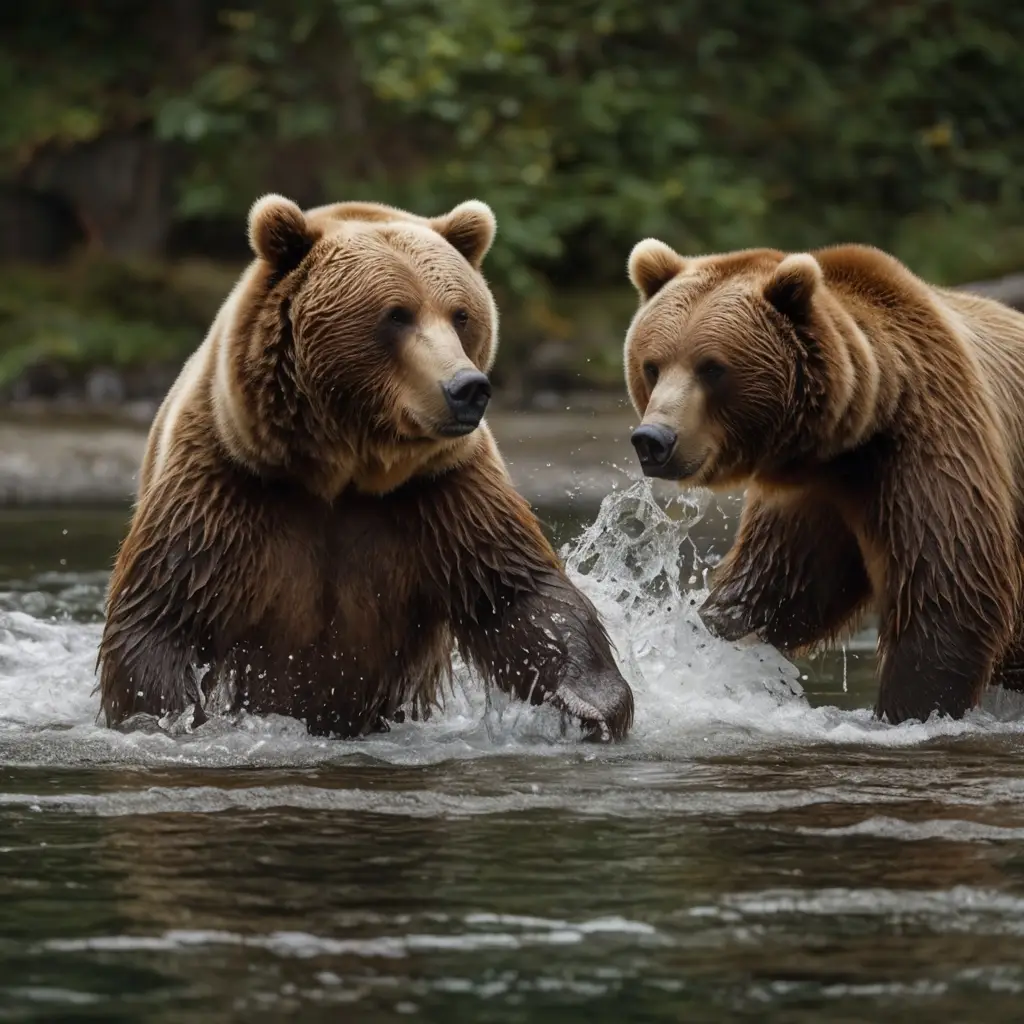 Now, those coastal grizzlies? They’re basically salmon-obsessed. Their whole schedule revolves around when the salmon show up—like, imagine planning your year around the local food truck’s calendar. When salmon season hits, these bears turn into expert anglers. And they’re not just doing it for fun; all that protein’s crucial for bulking up before hibernation. Gotta pack on that bear blubber if you wanna nap all winter.
Now, those coastal grizzlies? They’re basically salmon-obsessed. Their whole schedule revolves around when the salmon show up—like, imagine planning your year around the local food truck’s calendar. When salmon season hits, these bears turn into expert anglers. And they’re not just doing it for fun; all that protein’s crucial for bulking up before hibernation. Gotta pack on that bear blubber if you wanna nap all winter.
Black Bears
Black bears are kinda like your chill friend who’ll eat anything at a picnic. Most of what they chow down on is plants—berries, nuts, fruits—you name it. Honestly, they eat even more greens than brown bears do, which is saying something. But hey, if there’s a bug or a stray mouse nearby, don’t be shocked if a black bear goes for it. The cool part?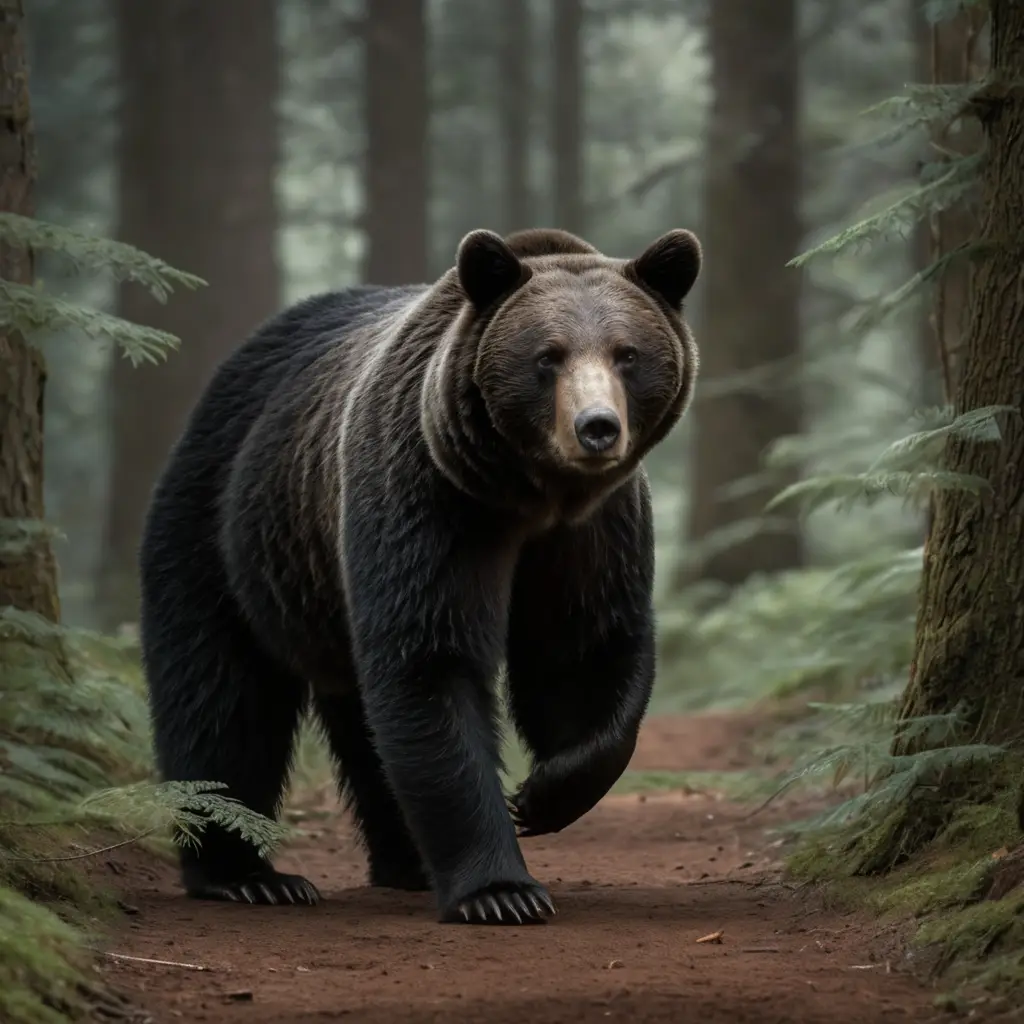 They’re awesome climbers, so while other animals are staring up at all those high-up apples and acorns, black bears are already halfway up the tree, helping themselves to a snack.
They’re awesome climbers, so while other animals are staring up at all those high-up apples and acorns, black bears are already halfway up the tree, helping themselves to a snack.
Polar Bears
Polar bears are basically the ultimate meat lovers—like, if there was a carnivore club, they’d be president. Around 90% of what they eat is other animals. Their favorites? Seals, especially those ringed ones. You’ll find these bears chilling (literally) by little holes in the ice, just waiting for a seal to pop up for air—sneaky, right?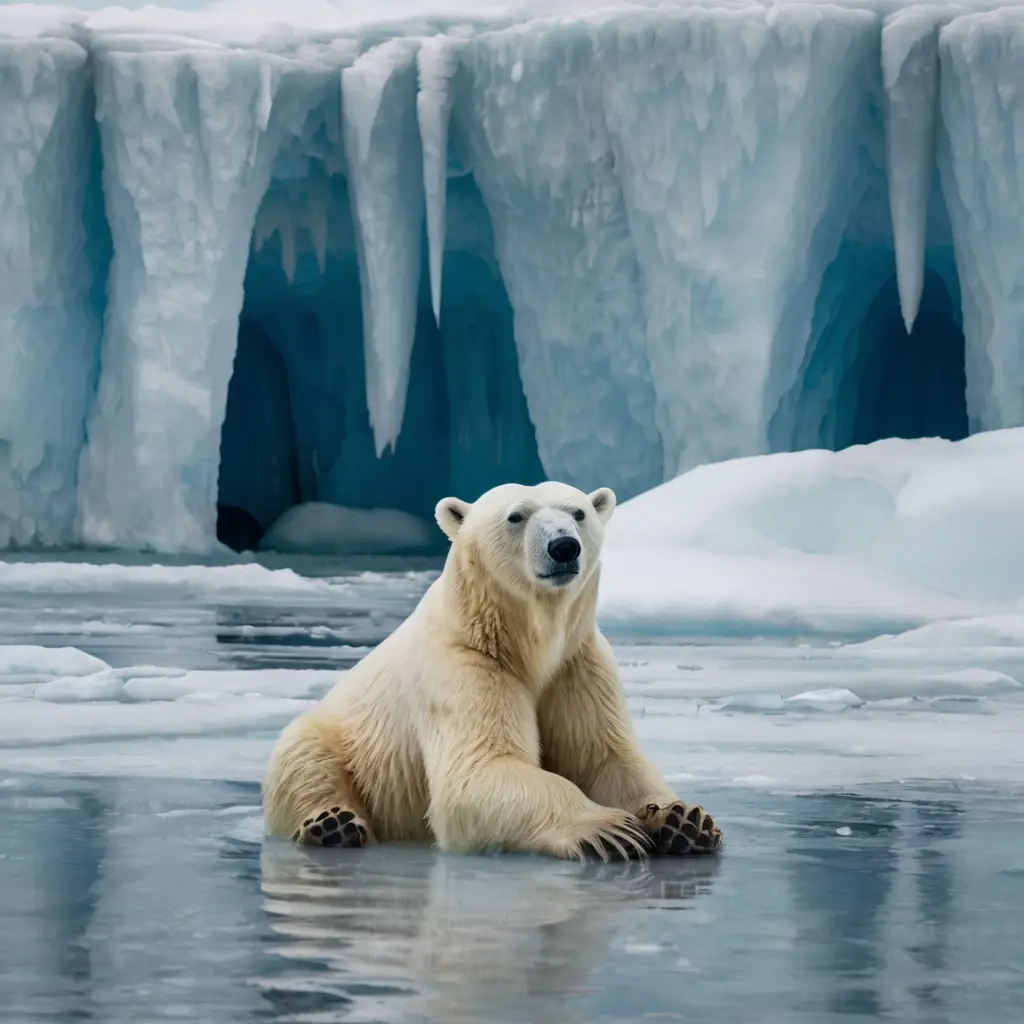 All that seal blubber isn’t just tasty, it’s what keeps them warm and full of energy in the wild, icy Arctic. Not much room for veggies when you live somewhere like that!
All that seal blubber isn’t just tasty, it’s what keeps them warm and full of energy in the wild, icy Arctic. Not much room for veggies when you live somewhere like that!
Asian Bear Species
Alright, here’s the deal: Asian black bears, sun bears, and sloth bears? Total food weirdos, each in their own way. Sun bears—those little honey junkies—can’t resist raiding beehives or slurping up bugs. Sloth bears, on the other hand, are basically the anteaters of the bear world. They go nuts for termites and ants, and with those funky snouts and claws, they’re built for bug-hunting. Nature really went wild with these guys’ menus.
Primary Food Sources
|
Food Category |
Brown Bears | Black Bears | Polar Bears | Asian Bears |
| Fish | 20-30% | 5-15% | 5-10% | 5-10% |
| Berries/Fruits | 25-35% | 35-45% | 0-5% | 30-40% |
| Nuts/Seeds | 15-25% | 25-35% | 0% | 20-30% |
| Insects | 10-15% | 15-25% | 0% | 25-35% |
| Small Mammals | 5-10% | 5-10% | 0-5% | 5-10% |
| Large Mammals | 5-15% | 2-8% | 80-90% | 2-5% |
| Vegetation | 15-25% | 20-30% | 0-5% | 15-25% |
Plant-Based Foods in Bear Diets
Most of a bear’s food comes from plants, which give them energy, fibre, and important nutrients. Bears have a deep sense of plant phenology and know when different plants are at their healthiest and easiest to get to.
Berries and Fruits
Bears freakin’ love berries. Like, if you could see a bear at an all-you-can-eat berry buffet, you’d get it. Blueberries, huckleberries, blackberries, cranberries—they’re basically the VIPs on the bear menu. And timing? Perfect. These fruits usually show up just when bears are cramming for their big pre-hibernation nap, late summer to early fall.And yo, we’re not talking a handful here. Some bears are scarfing down, what, 30,000 berries a day? That’s wild. But hey, it’s not just for kicks—they need to pack on the pounds if they wanna make it through winter without starving. Survival of the berry-hungriest, I guess.
Nuts and Seeds
Bears go nuts for, well, nuts. Seriously, stuff like pine nuts, acorns, hazelnuts, even beechnuts—these are like nature’s energy bars for them. All that fat and protein? Gold for a bear trying to bulk up before a long nap. You know what’s wild? Sometimes the whole bear neighborhood shifts around just because there’s a bumper crop of nuts somewhere. It’s like Black Friday at the forest buffet.
Now, grizzlies—especially in certain mountain spots—are borderline obsessed with whitebark pine nuts. Not kidding, those little seeds can make up half of what a grizzly eats before hibernation. Half! Problem is, whitebark pine is getting hammered by climate change and nasty tree diseases, so there’s way less of it around. Yeah, it’s a big deal for the bears, and the folks trying to keep them from going hungry are kind of freaking out about it.
Roots and Vegetation
So, bears basically chow down on whatever greens they can find when spring rolls around—roots, tubers, all that jazz. Not exactly gourmet, but after sleeping all winter, they’ll take what they can get. Stuff like clover, dandelions, and wild parsnip? Total bear salad bar. And don’t even get me started on their digging skills. Those claws aren’t just for show—they’re out there tearing up the ground, hunting for snacks hidden under the dirt. Mother Nature’s multivitamins, honestly.
Animal Protein Sources
While plant matter dominates most bear diets, animal protein provides essential amino acids and concentrated energy sources that are particularly important during certain seasons or life stages.
Fish and Aquatic Resources
Alright, let’s cut the science talk and get real: for a lot of bears, fish isn’t just a snack—it’s basically their main event. Picture a big ol’ grizzly face-planting into a river full of salmon. Jackpot, right? Those salmon runs? Bears treat ’em like an all-you-can-eat buffet, packing in the protein so they can get nice and chunky before winter hits. They’ve even got their own fishing hacks—wading in the rapids, full-on diving, or just swiping at fish like furry ninjas.
But hey, it’s not all about salmon. Bears hanging around the coast get their paws dirty digging for clams, snacking on mussels, or munching on whatever else the tide coughs up. Crayfish, water bugs—if it moves and it’s in the water, chances are a bear’s tried to eat it.
Insects and Invertebrates
Insects provide high-quality protein and are particularly important for bears with cubs, as they are easily digestible and nutrient-dense. Ants, beetle larvae, moths, and wasps are commonly consumed. Some bear species, like sloth bears, have specialized in insect consumption, developing unique anatomical adaptations for this dietary niche.
Small and Large Mammals
Bears opportunistically hunt small mammals like rodents, ground squirrels, and rabbits. Larger mammals, including deer, elk, and moose, are occasionally taken, particularly by brown bears. However, active hunting of large mammals is relatively rare, with bears more often scavenging carrion.
Seasonal Feeding Patterns
Bears exhibit distinct seasonal feeding patterns that reflect food availability and metabolic requirements. Understanding these patterns is crucial for wildlife management and human-bear conflict prevention.
Spring Feeding (March-May)
Spring represents a critical period for bears emerging from hibernation. Having lost 25-30% of their body weight during winter, bears must quickly replenish their energy stores. Early spring foods include grasses, sedges, roots, and any available carrion from winter-killed animals.
Summer Abundance (June-August)
Summer offers the greatest food diversity, with bears consuming a wide variety of berries, insects, fish, and vegetation. This is also the primary growing season for cubs, requiring mothers to consume high-quality foods to support milk production.
Fall Hyperphagia (September-November)
Fall represents the most critical feeding period, with bears entering a state of hyperphagia, consuming up to 20,000 calories per day. High-calorie foods like nuts, late-season berries, and salmon become primary targets as bears prepare for winter dormancy.
Hunting and Foraging Strategies
Bears have developed sophisticated hunting and foraging strategies that maximize energy intake while minimizing risk and energy expenditure.
Opportunistic Foraging
Bears are opportunistic feeders, taking advantage of whatever food sources are most abundant and accessible. This flexibility allows them to adapt to changing environmental conditions and food availability.
Specialized Hunting Techniques
Different bear species have developed specialized hunting techniques suited to their primary prey. Polar bears use still-hunting at seal breathing holes, while brown bears employ various salmon fishing strategies including diving, wading, and waterfall fishing.
Memory and Learning
Bears possess excellent spatial and temporal memory, allowing them to remember productive feeding locations and return to them at appropriate times. This knowledge is often passed from mothers to cubs, creating learned feeding traditions within bear populations.
Factors Affecting Bear Diet
Several factors influence what bears eat, including habitat quality, climate change, human activities, and population density.
Habitat Quality and Availability
The quality and diversity of available habitat directly impacts bear diet. Habitat fragmentation and degradation can force bears to rely on suboptimal food sources or increase human-wildlife conflicts.
Climate Change Impacts
Climate change is altering the timing and availability of traditional bear foods. Earlier spring melts, changing precipitation patterns, and temperature shifts are affecting berry production, salmon runs, and other critical food sources.
Human Activities
Human activities, including agriculture, urban development, and garbage availability, increasingly influence bear diets. While some bears adapt to human-provided food sources, this often leads to increased human-bear conflicts and negative outcomes for both species.
FAQ Section
What is the main food source for most bear species?
Plant matter typically comprises 80-90% of most bear diets, with berries, nuts, and vegetation forming the foundation of their nutrition. Only polar bears are predominantly carnivorous.
How much do bears eat per day?
Daily food consumption varies dramatically by season and species. During normal periods, bears consume 5,000-8,000 calories per day, but during fall hyperphagia, they can consume up to 20,000 calories daily.
Do bears hunt large animals regularly?
Most bear species rarely hunt large mammals, preferring to scavenge carrion when available. Brown bears are more likely to hunt large prey than black bears, but even they primarily rely on plant foods and fish.
How do bears find food?
Bears rely on their excellent sense of smell, which is seven times stronger than a bloodhound’s, along with spatial memory and learned behaviors to locate food sources.
What foods should humans avoid when in bear country?
Humans should properly store all scented items including food, toiletries, and garbage in bear-proof containers or hang them at least 12 feet high and 6 feet from tree trunks.
How does bear diet change with seasons?
Bear diet changes dramatically with seasons, from high-protein foods in spring to diverse summer foods, culminating in high-calorie fall foods before winter hibernation.
Conclusion
Understanding what do bears eat reveals the remarkable adaptability and ecological importance of these magnificent creatures. From the fish-dependent coastal brown bears to the seal-hunting polar bears, each species has evolved unique dietary strategies that allow them to thrive in diverse environments. The omnivorous nature of most bear species demonstrates their crucial role as both predators and seed dispersers, connecting different parts of the ecosystem in ways that benefit countless other species.
The seasonal patterns of bear feeding highlight the delicate balance between these animals and their environment. As climate change and human activities continue to alter traditional food sources, bears face increasing challenges in meeting their nutritional needs. Conservation efforts must focus on protecting critical feeding habitats, maintaining wildlife corridors, and reducing human-bear conflicts through proper food storage and waste management.
By appreciating the complexity of bear diets and their ecological relationships, we can better protect these incredible animals for future generations. The survival of bears depends not only on our understanding of what they eat but also on our commitment to preserving the diverse ecosystems that support their varied dietary needs. Through continued research, conservation efforts, and public education, we can ensure that bears continue to play their vital role in maintaining healthy, balanced ecosystems worldwide.
External Resources:
